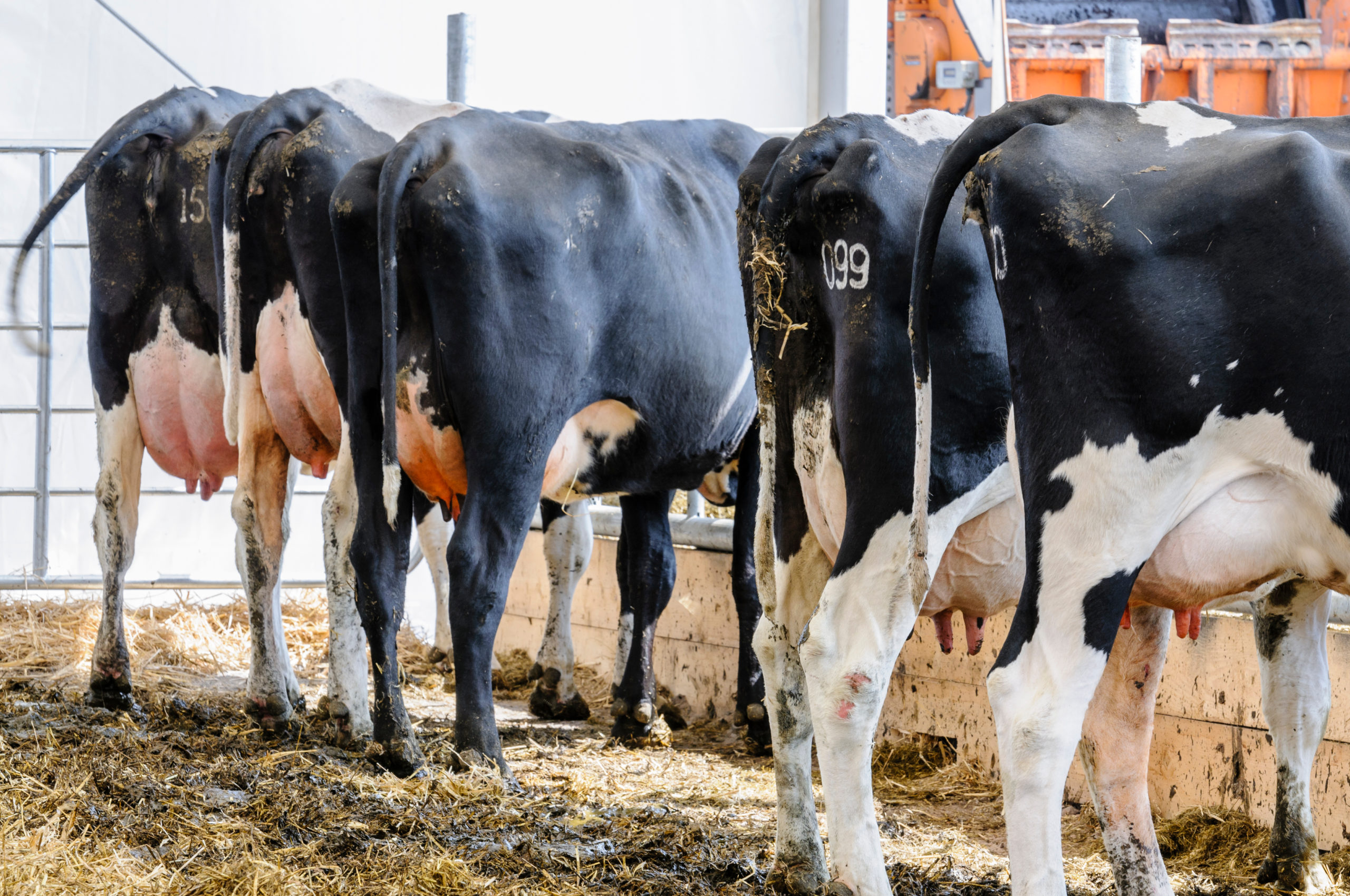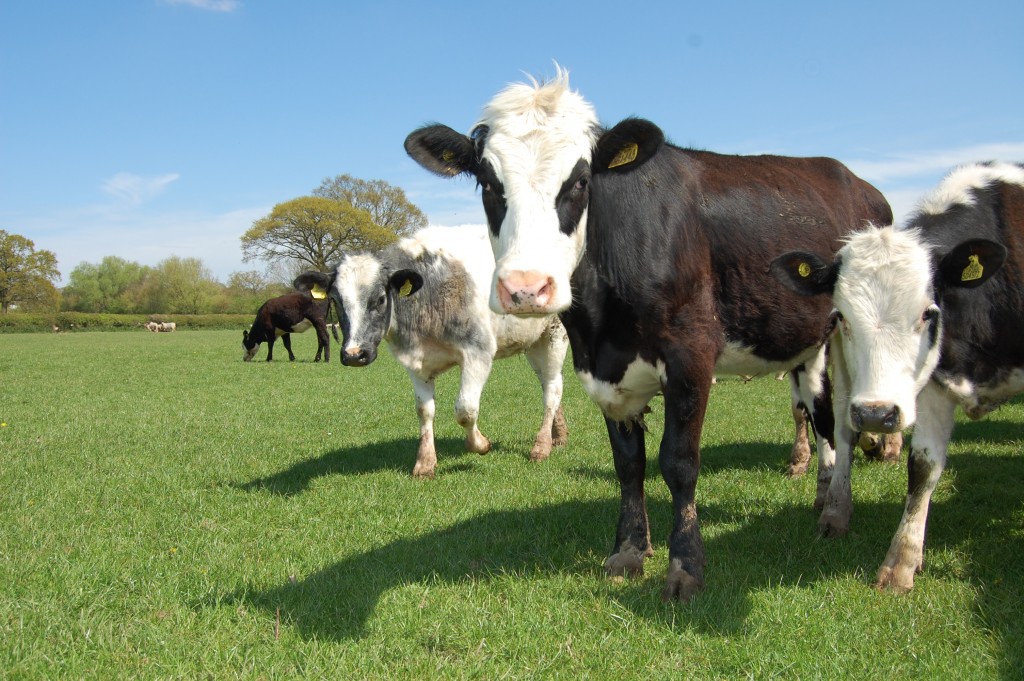This guidance applies in England

An inconclusive reactor (IR) is an animal with a skin test result that is neither clear (negative) nor positive. Once found, they must be isolated from the rest of the herd until they are re-tested. This is to reduce the risk of spreading TB to other cattle. If possible, they should also be kept separate from any TB reactors found at the same test.
When one or more IRs are found, the herd is initially put under automatic whole herd movement restrictions until the test result is reviewed by the Animal & Plant Health Agency (APHA). You need to isolate the IR on farm until it is re-tested. The IR cannot move off the holding except under a licence issued by APHA.

IRs found in officially TB free herds
For officially TB free (OTF) herds, when the test results are reviewed by APHA, the need for continuing whole herd movement restrictions until the IR re-test is assessed against the ‘three year rule’. APHA looks at the TB history of the herd over the last three years. If there has been a TB breakdown with lesion and/or culture positive animals on the holding within the past three years and other criteria are fulfilled, the three year rule applies.
If the three year rule applies then whole herd movement restrictions stay in place until the IR is re-tested. If the three year rule does not apply then the whole herd movement restrictions are cancelled with a new restriction notice (TB34) that only applies to the IR(s). If whole herd movement restrictions are lifted then you are free to trade and it is only the IR(s) that need to remain isolated and cannot move off the holding except under licence.

IRs found in TB-restricted herds
For IRs found where whole herd movement restrictions are already in place (e.g. in a TB breakdown situation), a TB34 isolation notice is served on the individual IR(s). You must isolate the IR(s) from the rest of the herd promptly and from any reactors found, if possible. IRs identified at a short interval test (SIT) will be re-tested at the next SIT. If the herd doesn’t require a further SIT, only the IR(s) will be re-tested but the whole herd movement restrictions will stay in place. Animals with an inconclusive result at their re-test (2xIR) are classed as reactors and compulsorily slaughtered.
Further testing
IRs are re-tested after a minimum of 60 days and there are two possible outcomes.
The animal is known as a ‘resolved IR’ and may re-join the herd. In the High Risk Area (HRA) and Edge Area (and TB breakdown herds in the Low Risk Area), resolved IRs are restricted for life to the holding in which they were found. However keeping resolved IRs in the herd poses significant risks.
If the animal does not test negative (i.e. is either a reactor or an IR again), it is classed as a reactor and compulsorily slaughtered.
On occasions, in TB breakdown herds with lesion and/or culture positive animals, IRs may be slaughtered by APHA as direct contacts before they are re-tested, with compensation paid.

Private slaughter of IRs
You can choose to send an IR to slaughter at your own expense before it is re-tested. You must tell APHA, giving as much notice as possible, as they will have to issue a specific TB24 licence allowing the IR to travel to a slaughterhouse of your choice. It does not have to be an APHA-contracted slaughterhouse however you must first check directly with the Food Business Operator and Food Standards Agency at the slaughterhouse that they are content to accept the IR(s) and you will need to confirm this to APHA.
IRs can only go direct to an abattoir, they are not permitted to go via a slaughter collection centre. APHA arrange for the IR to undergo post mortem inspection in the slaughterhouse to look for lesions suspicious of TB, and tissue samples are taken for bacteriological culture.

Compensation is not paid for privately slaughtered IRs. Taking this option rather than waiting for the outcome of the IR’s re-test doesn't mean the movement restrictions on your herd will be lifted automatically and could lead to additional testing. If you are considering privately slaughtering one or more IRs, please contact APHA to discuss your case so that you are fully aware of the potential consequences and can make an informed decision.
If an IR dies on farm or has to be put down for welfare reasons, you also need to inform APHA. You will not receive compensation for IRs that die on your farm. If an IR dies on farm or is privately slaughtered and post-mortem inspection reveals visible lesions suspicious of TB and/or there is a positive laboratory result, APHA applies whole herd movement restrictions (unless they are already in place) and tests the rest of the herd.
Decision making when managing IRs
If one or more IRs are found in your otherwise TB-free herd, you should discuss this with your vet so that you can make an informed decision about their management.
What is the likelihood that an IR is infected with TB?
For unrestricted herds in England in 2019 that had surveillance tests disclosing IR(s) in the absence of reactors (IR-only herds), 40% of the ones in the HRA, 33% in the Edge Area, and 23% in the Low Risk Area (LRA) went on to have a TB incident (with or without lesion and/or culture positive animals) within the following 15 months. In around half of these cases the incident was detected at the IR(s) re-test in the HRA and Edge Area (82% of cases in the LRA). So, we know that IRs definitely pose a TB risk to the rest of the herd, however it’s not straightforward to quantify this risk for individual herds.
National or regional estimates of TB risk can be misleading since the likelihood of an IR becoming a 2xIR or reactor will vary from animal to animal depending on factors such as
- the location (bTB risk area) of the affected farm
- the TB history and status of the cattle herd
- the origin and TB testing history of the animal
- the size of the skin reaction to bovine tuberculin etc.
You should discuss the specific risk posed by IR(s) in your herd with your vet so that you can make an informed decision about their management. Ultimately it is best to be proactive and identify disease at an earlier stage so that you can deal with it quickly and prevent it spreading.
What are my options for managing an IR?
You have the option to privately slaughter an IR before its re-test however there are consequences for the rest of the herd which need to be considered (see section above on private slaughter of IRs).
Another option available to support the decision making process is to conduct a private interferon-gamma blood test. If the test result is negative, this may provide you with additional information and assurance about the infection status of the IR(s) to assist with decision making. If the test result is positive, your herd would be placed under movement restrictions, the reactor compulsorily slaughtered with compensation paid, and normal breakdown procedures would apply. If you are considering private gamma testing then you should first discuss it with your vet, who will need to apply to APHA on your behalf for authorisation. More information about private gamma testing is available on GOV.UK.
The risks posed by resolved IRs
A resolved IR is an animal that had an inconclusive test result, but then subsequently re-tested clear. Scientific studies looking at resolved IRs in the Republic of Ireland1,2 where bovine TB is widespread, have demonstrated that such animals have significantly higher odds of becoming reactors at a subsequent test in the same or another herd. The studies concluded that
- Resolved IRs that moved out of the herd within six months of passing their re-test were 12 times more likely to be positive at the next test or slaughter, compared to all animals in the national herd1.
- Between 11.8% and 21.4% of IRs slaughtered prior to re-test showed visible lesions suspicious of TB at post mortem meat inspection, compared with less than 0.3% of non-IR animals1.
- During the study period, the time to detect TB in resolved IRs was 78% shorter, on average, compared to clear-testing cattle2.
Further research has been carried out exploring the risk posed by resolved IRs in England and Wales3,4, which adds to the evidence above. This latest research found that the odds of a resolved IR becoming a subsequent reactor during the study period were seven and nine times greater than for negative testing animals in the HRA and Edge Area of England, respectively3.
At herd level, the time interval before a new TB breakdown in IR-only herds (those with IR(s) only and no reactors) in England and Wales was around half that of herds with a negative whole herd test. The hazard of a subsequent TB breakdown was 2.7 times greater for IR-only herds compared with clear herds in year one, after accounting for the influence of accepted risk factors of TB4.
Analyses of cattle herds in England in 2019 showed that in the High Risk Area (HRA), 40% of IR-only herds went on to have a TB incident (with or without lesion and/or culture positive animals) within the following 15 months (33% in the Edge Area)5.
In light of this, all resolved IRs in the High Risk Area (HRA), Edge Area, and in TB breakdown herds in the Low Risk Area (LRA) must remain restricted for life to the holding in which they were found. The only licensed off movements permitted are to slaughter or to an Approved Finishing Unit (AFU), either directly or via an approved TB gathering. It is recommended that these animals are physically identified, such as freeze branding, management tag or marking the passport, to prevent them from accidentally moving off the holding.
Resolved IRs can be released from their life-long restrictions by private interferon-gamma blood testing paid for by the keeper with the approval of APHA. If a resolved IR tests negative to the gamma test (as long as the gamma test is undertaken after the animal has been closed as an IR), the life-long restrictions on the animal are lifted and it can move freely (unless whole herd movement restrictions apply). If a resolved IR tests positive to the gamma test, it is considered a reactor and normal TB breakdown procedures apply.
References
- Clegg, T. A. et al. Shorter-term risk of Mycobacterium bovis in Irish cattle following an inconclusive diagnosis to the single intradermal comparative tuberculin test; Preventive Veterinary Medicine 102(4):255-64
- Clegg, T. A. et al. Longer-term risk of Mycobacterium bovis in Irish cattle following an inconclusive diagnosis to the single intradermal comparative tuberculin test; Preventive Veterinary Medicine 100 (3-4):147-154
- May E, Prosser A, Downs S. H, Brunton L. A. Exploring the risk posed by animals with an inconclusive reaction to the bovine tuberculosis skin test in England and Wales; Veterinary Science 2019, 6(4), 97;
- Brunton L. A, Prosser A, Pfeiffer D. U, Downs S. A. Exploring the fate of cattle herds with inconclusive reactors to the tuberculin skin test; Front. Vet. Sci. 2018 (5) 228
- Epidemiology report – bovine tuberculosis in England in 2019 (Animal & Plant Health Agency)

Useful resources
- Factsheet on inconclusive reactors
- Policy on resolved inconclusive reactors in England